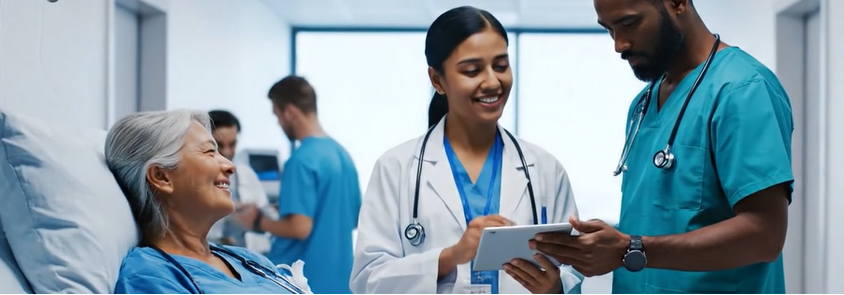ICH E6(r3) Interactive Visualizer
Track how global GCP guidance evolved from the Nuremberg Code to today's agile quality standards. Explore how E6(R3) rebalances ethics, oversight, and technology so teams can design fit-for-purpose trials with confidence.
A New Era of Good Clinical Practice (GCP)
Visualizing the ICH E6 (R3) Guideline
ICH Vision
To provide a flexible framework that supports diverse clinical trial types and data sources while protecting participant safety and ensuring reliable results.
The 12 Principles of Good Clinical Practice
A refresh and expansion of the core tenets. Hover over a card to highlight it.
1. Ethical Conduct
Trials must be conducted ethically, respecting scientific principles and the Declaration of Helsinki.
2. Favorable Benefit-Risk
Anticipated benefits must justify foreseeable risks and burdens for participants.
3. Participant Rights & Well-being
The rights, safety, and well-being of participants are paramount.
4. Informed Consent
Freely given informed consent should be obtained from every participant.
5. Reliable Information
Information generated must be reliable, high quality, and serve its intended purpose.
6. Clear Objectives
The protocol should be clear, concise, and designed to meet trial objectives.
7. Defined Roles & Responsibilities
Roles and responsibilities of all parties must be clearly defined and documented.
8. Qualified Personnel
Individuals conducting a trial should be qualified by education, training, and experience.
9. Quality by Design
Quality should be built into the trial design and conduct from the start.
10. Fit-for-Purpose Processes
Processes and data collection methods should be proportionate and suitable.
11. Appropriate Oversight
Oversight must be proportionate to the risks inherent in the trial.
12. Data Integrity & Traceability
Records should be accurate, complete, and contemporaneous for full traceability.
A Journey Through GCP Evolution
Milestones are summarised below; hover or focus to reveal deeper context for each turning point.
1947
Nuremberg Code
Code sets voluntary consent as a non-negotiable standard.
Nuremberg Code
Judges of the Doctors' Trial issued 10 principles after WWII, insisting on informed consent, scientifically sound design, and qualified personnel before human experimentation may proceed.
1964
Declaration of Helsinki
World Medical Association translates ethics into clinical research duties.
Declaration of Helsinki
Physicians adopted guidance that mandates independent review boards, clear risk-benefit evaluation, and special protection for vulnerable groups—creating the ethical backbone for modern trials.
1996
ICH E6 (R1)
ICH delivers the first unified GCP guideline across EU, Japan, and US.
ICH E6 (R1)
Regulators and industry harmonised expectations for protocols, investigator responsibilities, monitoring, and essential documents so multinational studies could follow one quality playbook.
2016
ICH E6 (R2)
Risk-based quality management and electronic records enter the framework.
ICH E6 (R2)
The addendum emphasised sponsor oversight of vendors, proportionate monitoring focused on critical data, and controls for electronic systems, marking the shift toward data-driven quality.
2023+
ICH E6 (R3)
Step 4 rewrite prioritises flexibility, QbD, and proportionate oversight.
ICH E6 (R3)
E6(R3) reframes GCP around critical-to-quality factors, modular requirements for diverse study designs, and adaptive governance that supports decentralised, digital, and real-world data trials.
Key Evolution from R2 to R3
The major shifts towards a more flexible and intelligent framework.
FROM: “One-Size-Fits-All” Approach
- Rigid, checklist-based execution.
- Intensive source data verification (SDV) for all data.
- Reactive quality assurance.
- Paper-based and traditional trial paradigms assumed.
TO: “Fit-for-Purpose” Mindset
- Quality by Design (QbD): Proactively identify and protect “Critical to Quality Factors”.
- Proportionate Risk Management: Scale monitoring and oversight based on specific risks.
- Technology-Agnostic: Embraces digital health tech and innovative data sources.
- Holistic Data Governance: Increased emphasis on the entire data lifecycle.
Visualizing the Paradigm Shift
This chart shows the shift from a prescriptive (R2) to a proactive (R3) framework. R3 prioritizes designing quality into processes from the start.
R2 vs. R3: Comparing Core Focus Areas
This interactive radar chart compares the focus of the old (R2) and new (R3) guidelines across key areas. R3 shows a clear evolution towards a more modern, risk-based approach.
The Quality by Design (QbD) Cycle
Click on a step to highlight it.
Identify Critical-to-Quality Factors
Endpoints, Safety, Inclusion/Exclusion
Identify & Evaluate Risks
Complex procedures, unreliable tools
Control Risks
Central monitoring, enhanced training
Communicate
Ensure all parties understand the plan
Review & Report
Continuously monitor risk controls
The Modern CRA Dashboard
Visualizing the impact of ICH E6 (R3) on clinical monitoring.
From Verifier to Quality Driver
ICH E6 (R3) transforms the role of the Clinical Research Associate from repetitive verification to strategic, risk-based oversight. The dashboard below highlights how monitoring activities evolve and where modern CRAs focus their attention.
Time on 100% SDV
-80%A dramatic reduction in manual data verification unlocks time for proactive quality work.
Focus on Critical Data
+300%More effort concentrates on protecting patient safety and safeguarding trial integrity.
Data-Driven Decisions
95%Most monitoring actions are guided by central analytics and dynamic risk indicators.
Shift in Monitoring Activities
Effort moves away from exhaustive verification and toward targeted, insight-led interventions across core monitoring tasks.
R3-Era Time Allocation
A look at how a modern CRA spends time once manual routines give way to collaboration, training, and analysis.
Risk-Based Site Prioritization
Central monitoring produces risk scores so CRAs can prioritize follow-up where issues are most likely to occur.
The Modern CRA Workflow
1. Review Central Analytics
Analyse consolidated risk indicators and emerging data trends from the central dashboard.
2. Prioritise Actions
Identify high-risk sites and critical data points that need focused intervention.
3. Conduct Targeted Follow-up
Apply remote or on-site monitoring that directly addresses the risks uncovered.
Benefits of Adopting ICH E6 (R3)
A significant win for the entire clinical research ecosystem.
The adoption of R3 principles creates a positive impact across the board. This chart represents the high level of benefit for key stakeholders, leading to a more efficient, safer, and innovative clinical trial environment.

